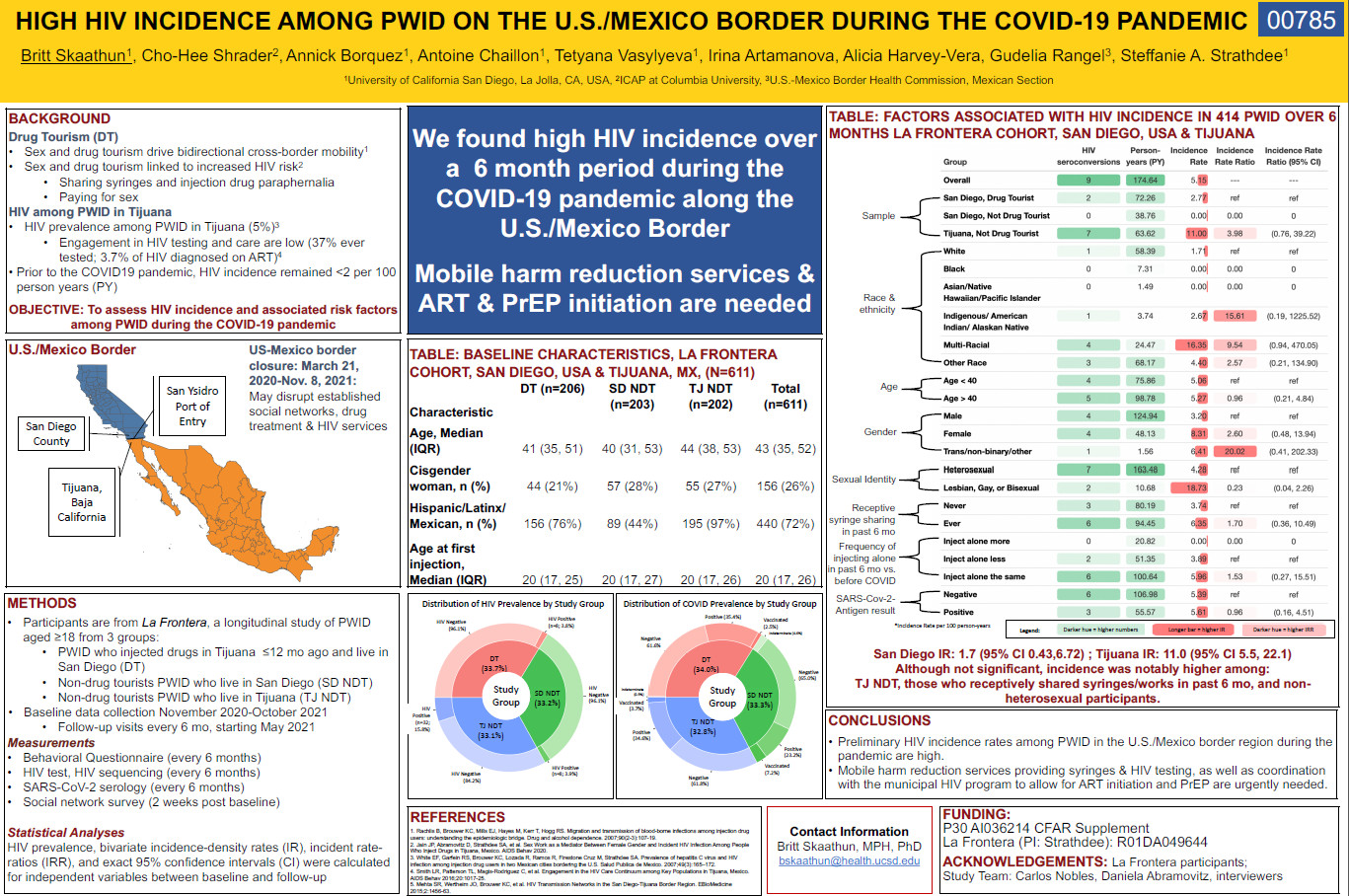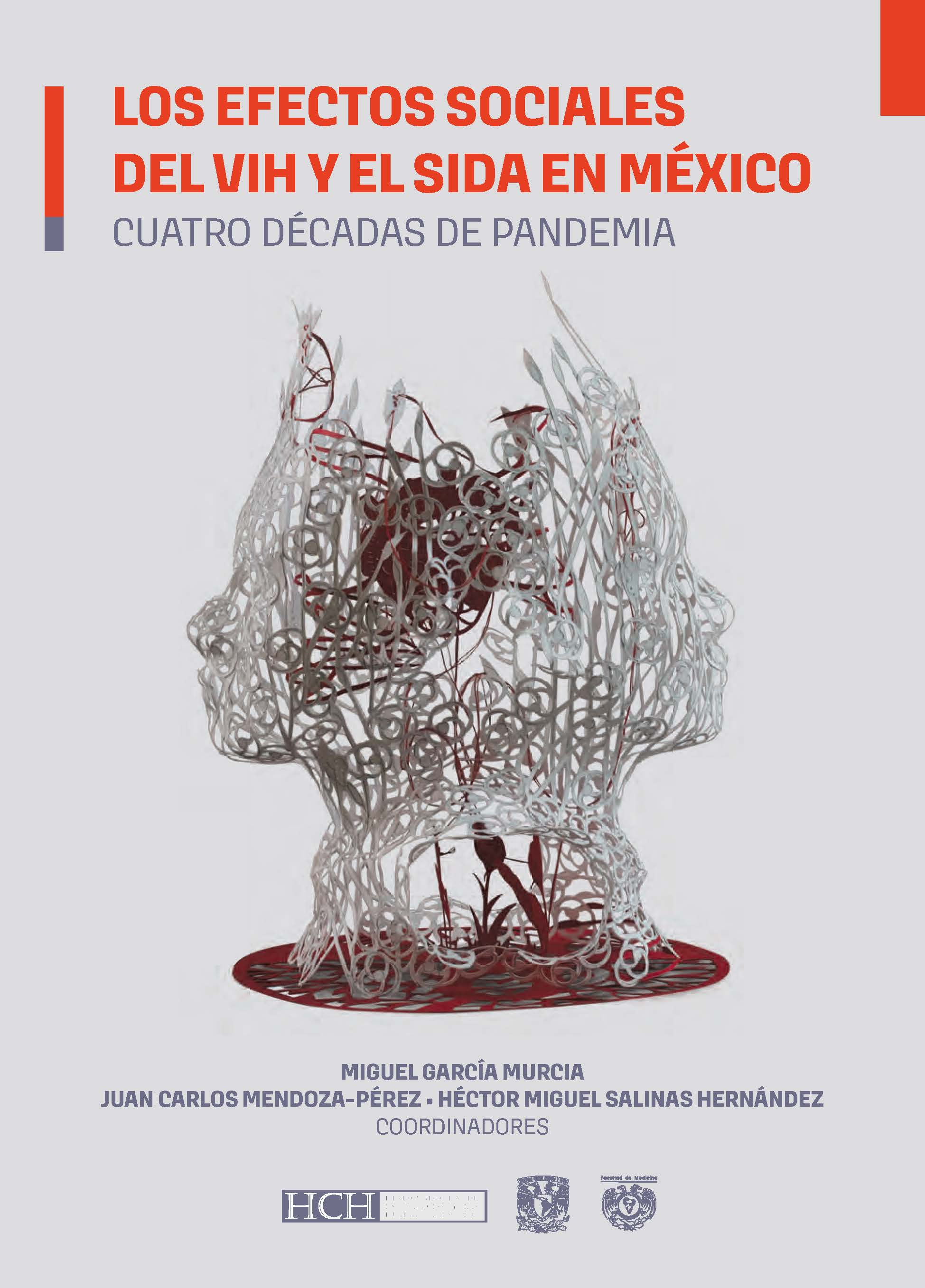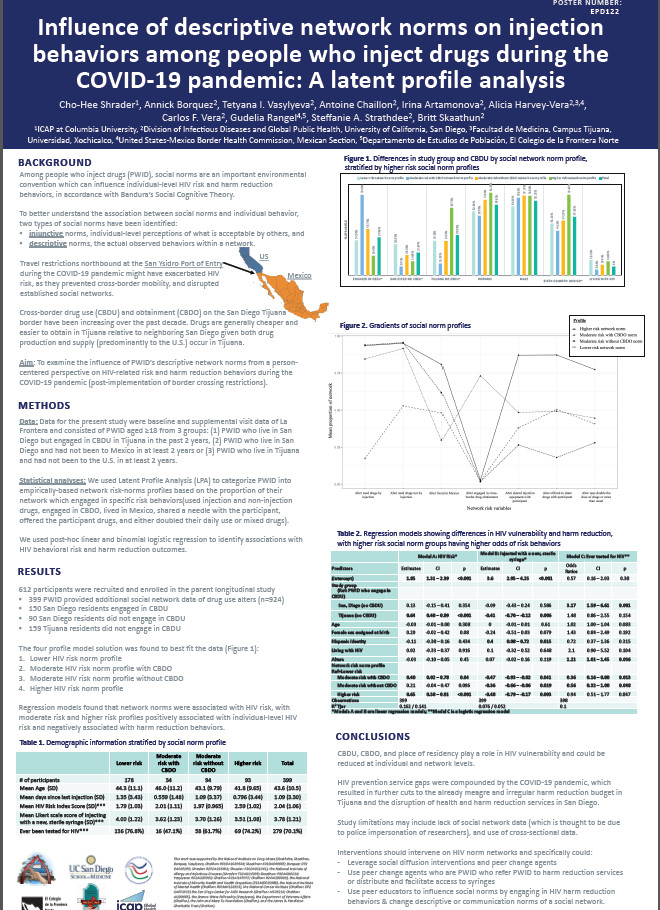Resumen
In the U.S/Mexico border region, drug tourism (DT) has been linked to increased HIV risk among people who inject drugs (sharing injection equipment) and paying for sex. Sex and DT from the U.S. to Mexico drive bidirectional cross-border mobility, and have consequently played an important role in HIV spread in the border region, but prior to the COVID19 pandemic, HIV incidence remained <2 per 100 person years (PY). We assessed HIV incidence and associated risk factors among PWID during the COVID-19 pandemic. Participants are from La Frontera, a longitudinal study of PWID aged ?18 from 3 groups: PWID who injected drugs in Tijuana ?24 months ago but live in San Diego (SD DTs), and non-drug tourist (NDT) PWID, who live in SD county or Tijuana (TJ) but have never used illicit drugs across the border. Beginning in Oct/2020, participants underwent surveys and provided samples for HIV and SARS-CoV-2 serology every 6 months, and an egocentric social network (SN) survey. HIV prevalence, bivariate incidence-density rates, incident rate-ratios (IRR), and exact 95% confidence intervals (CI) were calculated for independent variables between baseline and follow-up.
To date, among 611 participants at baseline, HIV prevalence was 7.6% (SD DT: 3.8%, SD NDT: 3.5%, TJ NDT: 15.8%). Of the HIV- PWID returning for their 6 months visit thus far (n=286; 93% follow-up), eight HIV seroconversions occurred during 118 PY of follow-up (Incidence: 13.53/100PY; 95% CI: 5.84- 26.66). Although not significant, incidence was notably higher among TJ NDT (19.9/100PY vs 1.82/100 PY SD DT vs 0 SD NDT; IRR 10.94, 95% CI 0.35, 22.59 TJ NDT vs SD DT), those who shared syringes/works with a network member (30.34/100PY vs. 7.31/100PY; IRR 4.15, 95% CI 0.37,9.19) and non-heterosexual participants (29.31/100PY vs 5.38/100PY; IRR 4.67, 95% CI 0.39, 9.67). Preliminary HIV incidence rates among PWID in the U.S./Mexico border region during the pandemic are high, and suggest a new HIV outbreak among PWID residing in TJ. Mobile harm reduction services providing syringes and HIV testing, as well as coordination with the municipal HIV program to allow for ART initiation and PrEP are urgently needed to prevent a continuing outbreak.






